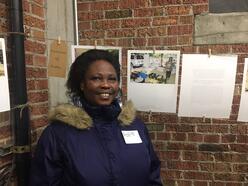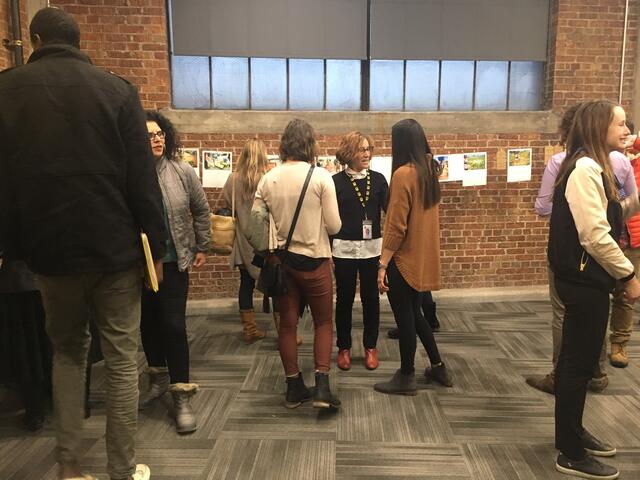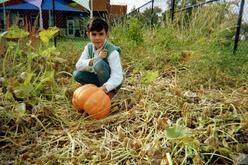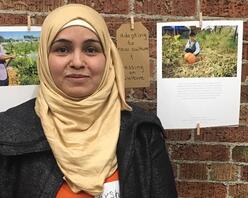
If you were uprooted from your home, how would you integrate into a new community? Many resettled refugees in Salt Lake City find a sense of belonging in their new home through gardening. New Roots, a program of the International Rescue Committee (IRC), enables refugees to celebrate their heritage and nourish themselves and their neighbors by planting strong roots in their new communities. Through a community garden, micro-farm training program and farmers market, New Roots participants in Salt Lake City work together to learn from one another, building friendships in the process.
For the past six months, nine New Roots farmers participated in PhotoVoice, a participatory action research method where individuals take photographs and participate in group dialogue to deepen their understanding of a community project. These images build context and set the focal point for a discussion between policy-and-decision makers. Nearly 40 New Roots farmers, partners and community members recently gathered at the IRC in Salt Lake City office for an exhibit of these photos.

The question presented for evaluation was “How has participation in [the New Roots Program] affected your life?” Program participants answered through photos with captions; responses ranged from “meeting neighbors, creating community and sharing ideas” to “memories of home” and “relaxation and stress relief.”
Here are a few moments from the gathering and discussion:
Ashiraf, a New Roots farmer from the Democratic Republic of Congo, appreciates the skills and knowledge shared between participants, “We have very many people around us who can help us or show us new skills at the market and at the farm...we learn what [we] don’t know from them. Maybe even they are learning what they don’t know from me. Different people grow different plants and different roots on the farm. We learn from each other.”

Albert, who began farming with New Roots when the program began, almost 9 years ago, noted that the farmers’ market fosters a sense of familiarity, “A lady told [an IRC employee], ‘You make me feel like I’m coming home. I’m not homesick, I am coming home.’ Because she went to the market and saw all the produce, everything she used to eat back home in Africa.”
Safaa, a New Roots gardener from Syria, found comfort in recognizing similarities between distinct cultures: “I thought this was really something appealing. Even though we are continents apart we eat the same things. This is famous here, the bell pepper with the tomatoes, and same back home. This is one of the main ingredients in every home. It is something that is shared between different cultures, different people.”

Not only does having a garden and access to a farmers’ market with culturally familiar food expand one’s sense of community and belonging, but it also empowers refugees and new Americans with choice and eases their transition. Dhan, a New Roots farmer from Nepal, explains “...Nepali vegetables are different from American vegetables. At the grocery store, we are compelled to buy the vegetables available because we have no choice. The garden allows us to have this choice.”
Through the PhotoVoice process, refugee participants and community partners commented on the importance of these green spaces in our lives—where food is grown and families rebuild their lives in a new community far from their home.
We want to extend a special thanks to our community partners for supporting refugees and new Americans through the New Roots program:
The Church of Jesus Christ of Latter-day Saints
University of Utah College of Social and Behavioral Science
Learn more about how New Roots empowers refugees and new Americans and stay up-to-date with the program by following New Roots on Facebook.